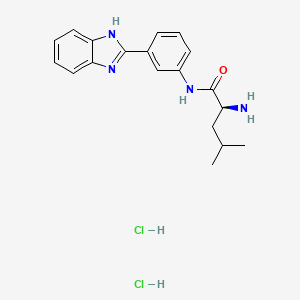|
Name: 5F–AMB (Methyl 2-(1-(5-fluoropentyl)-1H-indazole-3-carboxamido)-3-methylbutanoate)
Type: Synthetic cannabinoid
AKA: 5F-AMB

|
|
II. Natural Derivative
Synthetic substance, no natural derivative
 |
|
III. Chemical Profile (IUPAC name)

|
|
IV. History
5F-AMB, a synthetic cannabinoid, emerged in the 2010s. Known for its psychoactive effects, it is part of a series of synthetic cannabinoids developed for recreational use. Its history includes health concerns and regulatory responses due to its potency and risks.

|
|
V. Legal Information
5F-AMB is a synthetic cannabinoid with high abuse potential. It is controlled in many countries due to its psychoactive effects and impact on health. In the United States, 5F-AMB is listed as a Schedule I controlled substance, reflecting its high potential for abuse. Many other countries have similar regulations to curb its misuse. [Source: UNODC].
US Federal Schedule - I
Schedule I drugs, substances, or chemicals are defined as drugs with no currently accepted medical use and a high potential for abuse. Some examples of Schedule I drugs are: heroin, lysergic acid diethylamide (LSD), marijuana (cannabis), 3,4-methylenedioxymethamphetamine (ecstasy), methaqualone, and peyote.
Key US Federal Policies:
Controlled Substances Act. Public Law: Public Law 91-513 (text can be found on GovInfo) (https://www.dea.gov/drug-information/csa). Date enacted: October 27, 1970.
|
|
VI. Physical Effects
5F-AMB is a synthetic cannabinoid with potent psychoactive effects. It increases heart rate and blood pressure. Short-term use may produce intense psychoactive effects, while long-term use poses risks of cardiovascular issues and psychological problems. Overdose risks include severe agitation, hallucinations, and cardiovascular effects. Safe use requires cautious dosing and monitoring. Recent research explores its psychoactive effects and associated health risks.  |
|
VII. Psychological Effects
5F-AMB, a synthetic cannabinoid, induces euphoria and altered perception. Immediate effects include mood elevation and cognitive distortion. Long-term use can result in severe anxiety, psychosis, and cognitive impairments. Recent studies indicate high abuse potential and significant psychological risks associated with synthetic cannabinoids.
 |
|
VIII. Culture
5F-AMB is a synthetic cannabinoid with psychoactive effects. Its cultural significance is related to its use in recreational settings and its potential for abuse. Media coverage often addresses the risks and effects of synthetic cannabinoids, including potential for overdose and addiction. 5F-AMB is used recreationally rather than medicinally and contributes to discussions about synthetic cannabinoids and drug regulation.
 |
